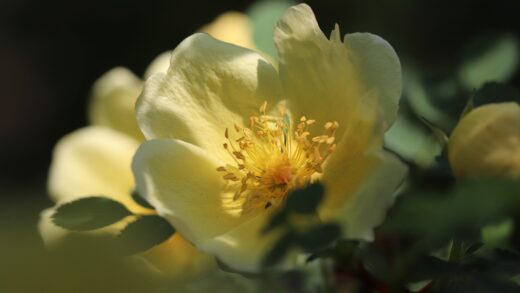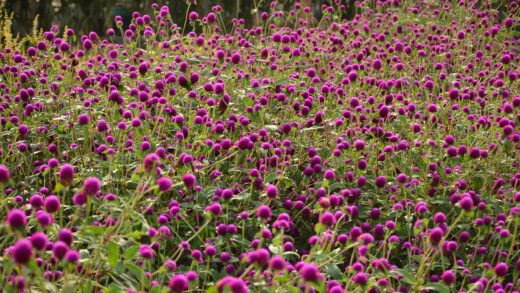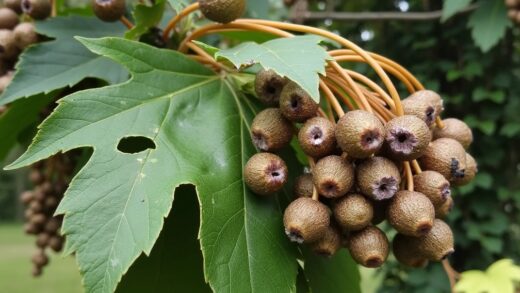Successfully establishing a Chinese juniper in the landscape begins with proper planting techniques, a process that lays the groundwork for the plant’s future health and longevity. The methods used for planting directly impact the ability of the root system to establish itself, access essential water and nutrients, and provide a stable anchor for the growing plant. Similarly, understanding the principles of propagation allows for the creation of new plants, preserving the genetic traits of desirable cultivars through methods such as cuttings or growing new varieties from seed. Both planting and propagation require attention to detail, including timing, site preparation, and post-procedural care, to ensure a high rate of success and the development of strong, resilient specimens.
The ideal time to plant Chinese junipers is during the cooler, more dormant periods of the year, which minimizes transplant shock and allows the root system to establish before the onset of environmental stress. Early fall is often considered the optimal planting season, as the warm soil encourages root growth while the cooling air temperatures reduce water loss from the foliage. This gives the plant several months to acclimate before the ground freezes. Alternatively, early spring, after the last hard frost but before the heat of summer arrives, is also a suitable planting window. Planting during the peak of summer should be avoided, as the combination of high temperatures and intense sun can place excessive stress on a newly transplanted juniper.
Thorough site preparation is a critical prerequisite for successful planting. This process begins with clearing the selected area of all weeds, grass, and other competing vegetation to ensure the new juniper does not have to vie for water and nutrients. The planting hole should be dug significantly wider than the root ball—at least two to three times the diameter—but no deeper than the root ball’s height. Digging a wide, shallow hole encourages the roots to grow outward into the surrounding native soil, which is essential for long-term stability and water uptake. The sides of the hole should be sloped to prevent the roots from circling, a common issue with vertically sided holes.
Before placing the plant in the hole, it is crucial to prepare the root ball itself. If the juniper is in a container, carefully remove it and inspect the root system. If the roots are tightly coiled or circling the bottom of the pot, a condition known as being root-bound, they must be gently loosened or scored to encourage outward growth. This can be done by hand or by making several shallow vertical cuts around the sides and bottom of the root ball with a sharp knife. For balled-and-burlapped (B&B) plants, place the entire root ball in the hole and then cut away and remove any twine, wire baskets, and as much of the burlap as possible to allow the roots unrestricted access to the surrounding soil.
Step-by-step planting guide
Once the planting hole and the root ball have been properly prepared, the next step is to correctly position the Chinese juniper. Place the plant in the center of the hole, ensuring that the top of the root ball is level with or slightly above the surrounding ground level. Planting too deep is a common and often fatal mistake, as it can lead to the suffocation of roots and the development of collar rot at the base of the trunk. Use a straightedge, such as a shovel handle, placed across the hole to accurately gauge the correct planting depth. Backfill the hole with the native soil that was originally excavated, as this encourages the roots to adapt and grow into the surrounding landscape.
More articles on this topic
After positioning the juniper at the correct depth, begin backfilling the hole, adding soil in layers and gently tamping it down to eliminate any large air pockets. Air pockets around the root ball can dry out roots and hinder their establishment. Fill the hole about halfway with soil, and then water thoroughly to help settle the soil around the roots. Once the water has drained, continue backfilling with the remaining soil until the hole is full, ensuring the final soil level is even with the top of the root ball. Avoid mounding excess soil against the trunk of the juniper.
Immediately after planting, a thorough and deep watering is essential to saturate the root ball and the surrounding backfilled soil. This initial watering helps to further settle the soil, remove any remaining air pockets, and provide the critical moisture needed to reduce transplant shock. A helpful technique is to create a small, temporary berm or water-retaining ring of soil on the surface around the outer edge of the planting hole. This basin helps to concentrate water directly over the root zone and allows it to percolate slowly and deeply into the soil rather than running off the surface.
Following the initial watering, applying a layer of organic mulch over the planting area provides numerous benefits for the newly installed juniper. Spread a two- to three-inch layer of mulch, such as wood chips or shredded bark, over the entire backfilled area, extending it out to the dripline of the plant. This mulch layer helps to conserve soil moisture, regulate soil temperature, and prevent the growth of competing weeds. Crucially, ensure that the mulch is pulled back a few inches from the base of the juniper’s trunk to prevent excess moisture buildup against the bark, which can promote disease and rot.
Propagation from cuttings
Propagating Chinese junipers from cuttings is the most common and reliable method for creating new plants that are genetically identical to the parent. This technique, known as vegetative or clonal propagation, ensures that the desirable characteristics of a specific cultivar, such as its color, form, and growth habit, are preserved. The best time to take cuttings is typically from late fall to mid-winter when the plant is dormant, as these hardwood cuttings tend to root more successfully. Alternatively, semi-hardwood cuttings can be taken in late summer or early fall after the current season’s growth has partially matured.
More articles on this topic
To take a cutting, select a healthy, vigorous branch from the parent plant and use a sharp, sterilized knife or pruning shears to remove a four- to six-inch section from the tip. The ideal cutting should include a portion of the previous year’s growth along with the current season’s growth. Make the basal cut just below a node, which is the point where needles or a side shoot emerges. After taking the cutting, strip the needles from the bottom one to two inches of the stem to expose the nodes where roots will form and to prevent the lower foliage from rotting in the rooting medium.
To enhance the chances of successful rooting, the prepared base of the cutting should be treated with a rooting hormone. Rooting hormones, which are available in powder, liquid, or gel form, contain auxins that stimulate root initiation and development. Lightly moisten the stripped end of the cutting and then dip it into the rooting hormone powder, ensuring a thin, even coating. Gently tap the cutting to remove any excess powder, as too much hormone can inhibit rather than promote root formation.
The treated cuttings should be inserted into a well-draining rooting medium, such as a mix of perlite, vermiculite, and peat moss. Insert the cuttings about one to two inches deep into the medium, ensuring they are spaced far enough apart that their foliage does not overlap, which helps with air circulation. Water the medium thoroughly and cover the container with a plastic bag or a propagation dome to maintain high humidity around the cuttings. Place the container in a location with bright, indirect light and maintain a consistent temperature, using a heating mat if necessary to keep the medium warm, which encourages faster rooting.
Propagation from seeds
Propagating Chinese junipers from seed is a less common method for home gardeners, as it is a longer and more complex process with variable results. Unlike propagation from cuttings, plants grown from seed will not be genetically identical to the parent plant, leading to variations in size, color, and form. This genetic variability can be desirable for plant breeders seeking to develop new cultivars, but it is a disadvantage when trying to replicate a specific variety. Additionally, juniper seeds have complex dormancy requirements that must be met before they will germinate.
The first step in seed propagation is to harvest the ripe, berry-like cones from a female Chinese juniper plant in the fall. The cones are typically a waxy, bluish color when mature. Once harvested, the seeds must be extracted from the fleshy pulp of the cone. This can be done by soaking the cones in water for a day to soften them and then mashing them to separate the seeds from the pulp. The viable seeds will typically sink to the bottom, while the pulp and non-viable seeds will float to the surface and can be skimmed off.
Chinese juniper seeds possess a double dormancy, which means they require both a period of warm stratification followed by a period of cold stratification to break dormancy and trigger germination. For warm stratification, the clean, dry seeds are mixed with a moist medium like sand or peat moss, placed in a sealed plastic bag, and stored in a warm place (around 20-25°C) for 60 to 90 days. Following this warm period, the seeds, still in their moist medium, must undergo cold stratification. This is achieved by placing the bag in a refrigerator (around 4°C) for another 90 to 120 days, simulating winter conditions.
After the stratification process is complete, the seeds are ready for sowing. Plant the seeds about a quarter-inch deep in a well-draining seed-starting mix. Keep the soil consistently moist but not waterlogged and place the container in a warm location with bright, indirect light. Germination can be slow and erratic, sometimes taking several weeks or even months to occur. Once the seedlings have emerged and developed their first true leaves, they can be carefully transplanted into individual pots to continue growing until they are large enough to be planted outdoors.
Aftercare for new plants
The period immediately following planting or propagation is a critical time that requires diligent aftercare to ensure the young juniper’s survival and successful establishment. For newly planted junipers in the landscape, consistent watering is the most important task. For the first full growing season, the soil around the root ball should be checked regularly and watered deeply whenever the top few inches become dry. This consistent moisture supply is vital for the development of new roots and helps the plant recover from the stress of transplanting. A deep watering once or twice a week is generally more effective than frequent, light sprinklings.
Monitoring for signs of transplant shock is also a key part of aftercare. Symptoms of transplant shock can include wilting, yellowing or browning needles, and a general lack of vigor. While some minor stress is normal, severe or prolonged symptoms may indicate an issue with watering, drainage, or the planting technique itself. It is important to ensure the plant is not being overwatered, as soggy soil can be just as damaging as dry soil. If the site has poor drainage, water may be collecting in the planting hole, and corrective measures may be needed to prevent root rot.
For newly propagated cuttings, aftercare focuses on maintaining the ideal rooting environment and monitoring for root development. Keep the rooting medium consistently moist but not saturated, and maintain high humidity by keeping the cuttings covered. Periodically vent the plastic cover to allow for some air exchange and prevent the buildup of mold or fungus. After several weeks or months, depending on the type of cutting, roots should begin to form. A gentle tug on a cutting that resists being pulled will indicate that rooting has occurred. Once a solid root system has developed, the cover can be gradually removed to acclimate the new plants to lower humidity levels.
Once the propagated plants have a well-developed root system and have been acclimated, they can be transplanted into larger individual pots. This step, known as potting up, provides more space for root growth and access to a greater volume of nutrients and water. Use a high-quality, well-draining potting mix and continue to provide regular watering and bright, indirect light. These young plants should be allowed to grow and strengthen in their pots for at least one full season before being considered for planting out in the garden, ensuring they are robust enough to withstand the rigors of the outdoor environment.


















